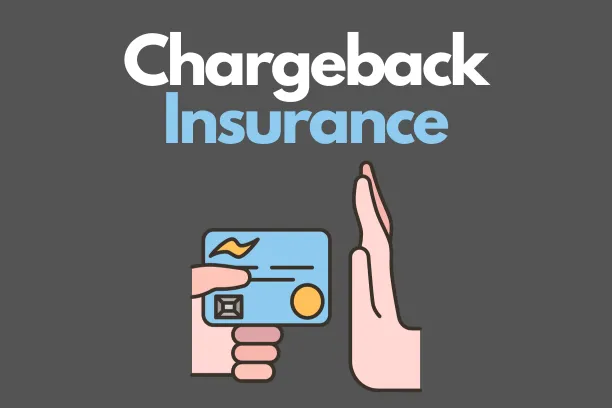WATCH THE VIDEO TO UNDERSTAND THE CONCEPT BETTER!
Understanding Chargeback Insurance: Safeguarding Your Business Finances

In the dynamic world of e-commerce and online transactions, the term “chargeback” has become a dreaded aspect for businesses. Chargebacks occur when customers dispute a transaction with their bank, leading to a reversal of funds. This can have severe consequences for businesses, affecting both their finances and reputation. In this article, we delve into the world of chargebacks, exploring their impact and introducing chargeback insurance as a vital tool to mitigate financial risks.
I. The Basics of Chargebacks and their Consequences:
A. What are Chargebacks?
Chargebacks, in essence, are disputed transactions initiated by customers, leading to a reversal of funds.
B. The Impact of Chargebacks on Businesses:
- Financial losses and revenue instability: Chargebacks can result in immediate financial setbacks, causing instability in a business’s revenue stream.
- Negative impact on merchant reputation: Repeated chargebacks can tarnish a business’s reputation and credibility.
- Penalties imposed by payment processors: High chargeback rates can lead to penalties from payment processors, further exacerbating financial strain.
C. Identifying and Analyzing Chargeback Trends:
- Importance of monitoring chargeback patterns: Analyzing trends is crucial for understanding and preventing future occurrences.
- Strategies to identify and track chargebacks: Utilizing effective tracking mechanisms to identify and address chargebacks promptly.
- Analyzing chargeback data: Data analysis aids in developing proactive measures to prevent chargebacks.
II. Understanding Chargeback Insurance:
A. What is Chargeback Insurance?
Chargeback insurance is a financial safeguard designed to protect businesses from the financial impact of chargebacks.
B. Types of Chargeback Insurance Policies:
- Partial liability chargeback insurance: Offers coverage for a percentage of chargeback losses.
- Full liability chargeback insurance: Provides comprehensive coverage for the entirety of chargeback losses.
- Customized chargeback insurance policies: Tailored solutions based on business-specific needs.
C. Acquiring Chargeback Insurance:
- Eligibility criteria: Understanding the prerequisites for obtaining chargeback insurance.
- Evaluating insurance providers: Researching and choosing reliable insurance providers.
- Cost and factors affecting premiums: Assessing the cost and variables influencing chargeback insurance premiums.
III. The Importance of Chargeback Prevention Strategies:
A. Implementing Effective Fraud Detection Measures:
- Utilizing advanced verification methods: Employing cutting-edge techniques to detect and prevent fraudulent transactions.
- Employing AI and machine learning: Harnessing technology for proactive fraud prevention.
- Collaborating with payment processors: Building partnerships to enhance security measures.
B. Enhancing Customer Service and Communication:
- Improving communication channels: Enhancing customer communication to reduce misunderstandings.
- Streamlining return and refund policies: Creating transparent policies for a positive customer experience.
- Resolving disputes promptly: Addressing customer concerns swiftly to prevent chargebacks.
C. Tools and Technologies for Chargeback Prevention:
- Fraud detection software: Implementing software solutions for real-time fraud detection.
- Chargeback alert systems: Utilizing systems to receive alerts and act promptly.
- Role of data analytics: Leveraging data analytics to identify and address chargeback patterns.
IV. Common Misconceptions about Chargeback Insurance:
A. Chargeback Insurance as a Replacement for Fraud Prevention:
- Highlighting the complementary nature: Emphasizing that chargeback insurance and fraud prevention work hand-in-hand.
- The importance of a holistic approach: Advocating for a comprehensive risk management strategy.
B. Limited Understanding of Coverage and Claims:
- Demystifying coverage: Clarifying what chargeback insurance covers.
- Process of filing claims: Guiding businesses through the process of filing claims and obtaining reimbursements.
C. Chargeback Insurance vs. Payment Processors’ Protection Programs:
- Differences between chargeback insurance and payment processor protection: Understanding distinctions between the two.
- Evaluating compatibility: Assessing how chargeback insurance aligns with existing safeguards.
Summary:
In conclusion, chargebacks pose significant threats to businesses, both financially and reputation-wise. Chargeback insurance emerges as a crucial tool in safeguarding against these risks. However, businesses must adopt a proactive approach by implementing robust prevention strategies. By understanding chargebacks, acquiring the right insurance, and implementing effective prevention measures, businesses can navigate the complex landscape of online transactions with greater confidence.

